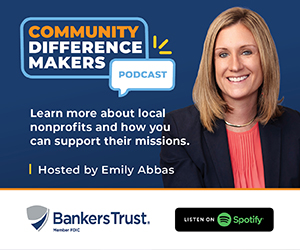Gitomer: Use those lessons and stories

JEFFREY GITOMER Jan 1, 2016 | 12:00 pm
<1 min read time
0 wordsBusiness Record Insider, Sales and MarketingIt’s likely you will be with family over the holidays.
Most people (not you of course) add to their waistline during these times. I’m going to share a few strategies that will fatten your wallet.
Whatever holiday you celebrate, families gather and talk about old times: growing up, vacations, past holidays. They all start out, “Remember the time that …” and they go on to tell a funny or poignant story.
THESE STORIES ARE GOLD.
In your presentations and informal meetings, telling and exchanging stories are at the core of rapport, relationship building and creating a buying atmosphere. Many of these stories fit your selling situations and relationship -building process.
Real stories make you seem more human, approachable, relatable and even (if the story is right) trustworthy.
Now that I have whet your holiday appetite, let me give you the strategies and details of story collecting.
First, get the stories rolling:
• Start by asking everyone to tell their most memorable story.
• Request stories in which they learned lessons from mistakes, embarrassing moments, funny responses and successes.
• Listen with the intent to understand (this means don’t interrupt):
• Listen for times a lesson was learned.
• Listen for funny responses to retell.
• At the end of the story, ask questions or request that the person elaborate or fill in missing details.
• Look for the reaction of others. It’s a hint as to how your customers may react.
• Take notes as you go. Don’t lose the lessons, the lines, the humor in any of the stories. You will NEVER remember everything without taking notes.
Listen for the lessons behind the endings:
• Lessons you learned as a child: Playing with others, accidents, in school, winning, losing, getting hurt, loss of a friend.
• The time you got into major trouble.
• The game-winning score.
Once you have the story and can see the fit into your style and delivery, it’s time to convert it to your sales presentation. Use the story:
• To overcome an objection (the same thing happened to my mother).
• To create common ground (the same thing happened to me).
• To justify price (my uncle told me a story about his dealings with …).
In retelling a story, keep it short and sweet:
• One to two minutes if you’re telling it to a customer one-on-one.
• Two to three minutes if you’re telling it to a group.
• Don’t set it up, just tell it (not “here’s a hilarious story” – you’ll set yourself up for failure).
• Have your lesson or point at the end, not at the beginning.
For years I have preached against telling jokes. Stories are yours – no one else can tell them.
I have told stories about chasing my dog, where I grew up, how I dropped out of college, big sales, lost sales, flying, traveling, hotels and restaurants.
I have featured my parents, brother, children, grandchildren, teachers, mentors, servers, sports heroes, doctors, customers, close friends, partners and past wives.
Every story I tell conveys a lesson or makes a point, many make people laugh. Many have been collected from holiday gatherings. All of my stories are original and personal to me.
The secret to storytelling is your enthusiasm. If you’re talking to one or 101, each person must feel like it’s your first time to tell it, even though you may have told it a hundred times before.
Now that’s something to celebrate.









